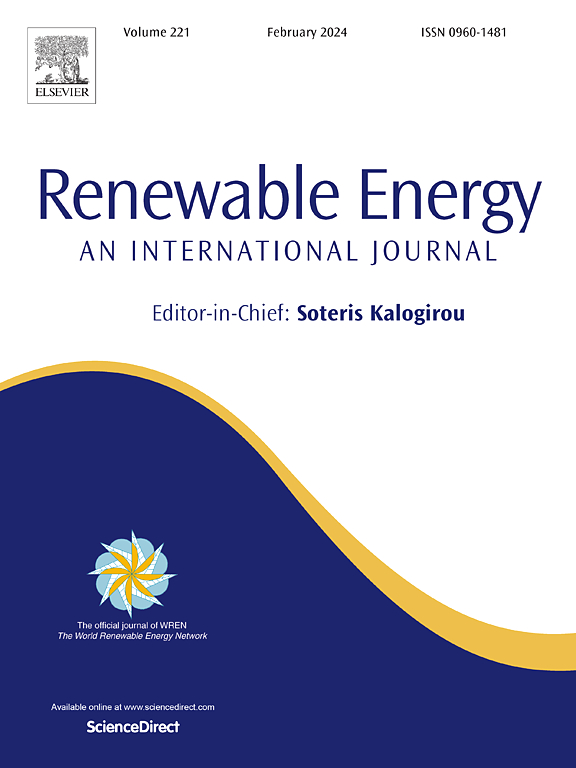探讨非相似集热器在先进太阳能网络设计中的影响
IF 9.1
1区 工程技术
Q1 ENERGY & FUELS
引用次数: 0
摘要
以效率和年成本为目标函数,对考虑平板集热器(FPC)的太阳能网络进行优化。研究了两种不同的场景:相似的情况和不相似的情况,允许选择具有不同参数的收集器。研究调查了网络中涉及2-4个集热器的三种情况,导致在相似情况下考虑6个设计参数,包括质量流量、管数和管径、集热器长度和宽度以及绝缘子厚度,而在非相似情况下考虑12-24个设计参数。优化结果表明,对于所有研究的示例,来自相似案例的结果始终优于来自非相似案例的结果。与相似情况相比,非相似情况下的最大效率提高了1.63% ~ 1.94%。最终优化方案可使年成本提高1.24% ~ 2.62%。例如,对于两个收集器,最大效率从类似FPC情况下的0.7068增加到非类似配置下的0.7183。4个收集器的上述数值分别为0.7195和0.7333。这些改进带来了实际的好处,包括更高的能源产量和更低的运营成本,这是加速太阳能应用的关键。本文章由计算机程序翻译,如有差异,请以英文原文为准。
Exploring the impact of non-similar collectors in advanced solar network design
In this paper, a solar network considering flat plate collector (FPC) is optimized considering both efficiency and annual cost as objective functions. Two distinct scenarios are explored: a similar case and a non-similar case, allowing for the selection of collectors with different parameters. The study investigates three cases involving 2–4 collectors in the network, leading to the consideration of 6 design parameters including mass flow rate, number and diameter of tubes, collector length and width, as well as insulator thickness, in the similar case and 12–24 design parameters in the non-similar case. The optimization results revealed that, for all studied examples, the results from the similar case were consistently outperformed by those from the non-similar case. The maximum efficiency improved by 1.63 %–1.94 % in the non-similar case as compared with the similar case. The annual cost is improved by 1.24 %–2.62 % in the final optimum solution. For example, the maximum efficiency increases from 0.7068 in the similar FPC case to 0.7183 in the non-similar configuration for two collectors. The mentioned values were respectively 0.7195 and 0.7333 in the four collectors. These improvements offer real-world benefits, including higher energy yield and lower operating costs—key to accelerating solar adoption.
求助全文
通过发布文献求助,成功后即可免费获取论文全文。
去求助
来源期刊

Renewable Energy
工程技术-能源与燃料
CiteScore
18.40
自引率
9.20%
发文量
1955
审稿时长
6.6 months
期刊介绍:
Renewable Energy journal is dedicated to advancing knowledge and disseminating insights on various topics and technologies within renewable energy systems and components. Our mission is to support researchers, engineers, economists, manufacturers, NGOs, associations, and societies in staying updated on new developments in their respective fields and applying alternative energy solutions to current practices.
As an international, multidisciplinary journal in renewable energy engineering and research, we strive to be a premier peer-reviewed platform and a trusted source of original research and reviews in the field of renewable energy. Join us in our endeavor to drive innovation and progress in sustainable energy solutions.
 求助内容:
求助内容: 应助结果提醒方式:
应助结果提醒方式:


